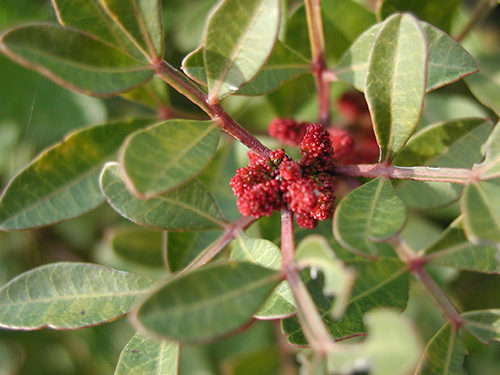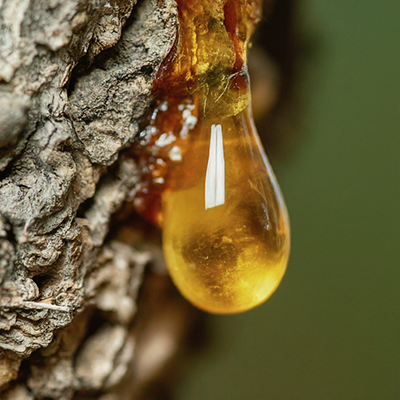Contents
The mastic tree’s pros and cons come down to the resin that the tree or lentiscus stems exude when cut on the surface. Dioscorides recommended it in the 1st century to “strengthen relaxed gum” and fight bad breath. It is part of many kinds of toothpaste and pharmaceutical preparations.

Mastic Tree Scientific Facts
- Scientific Name: Pistacia lentiscus L.
- Other Names: Lentiscus, lentisk pistache.
- French: Lentisque.
- Spanish: Lentisco, almácigo.
- Environment: Native to the Greek Islands, it has spread throughout the Mediterranean region. It grows in the dry land, among carob trees and holm oaks.
- Description: This shrub of the Anacardiaceae family grows up to one meter high. Its all-year green leaves are coriaceous and hairless. The fruit is a red or blackberry, the size of a pea.
- Parts of the plant used medicinally: The mastic resin and the leaves.
Mastic Tree Pros and Cons
The resin of the mastic tree contains mastic acid, masticine, and a pinene-rich essence. It becomes a mass as soft as wax, which sticks to the teeth when chewed. Due to its anti-inflammatory and antiseptic action, it fights pyorrhea and gingivitis (gum inflammation). It helps treat periodontosis (inflammation and degeneration of tissues that attach teeth), the first cause of tooth loss worldwide. It also sweetens the breath, giving a fresh and clean sensation.
Its young LEAVES and STEMS contain fewer active ingredients but more tannin. They are used in the same way as mastic resin and in rinses with a decoction to reduce the inflammation of the gums and strengthen teeth.
How to use Mastic Tree
- Mastic resin chewed or in toothpaste.
- Mouth rinses with a decoction of young stems and leaves (100 grams per liter of water) up to five times a day.

For thousands of years, people in the Mediterranean have used mastic resin as medicine for gastrointestinal ailments. Its oil possesses antifungal properties and is widely used in ointments for skin afflictions and disorders and in the manufacture of plasters.
Researchers have scientifically proved that the mastic tree possesses medicinal properties. According to one study in 1985, Meikai University and the University of Thessaloniki showed that this tree could reduce dental plaque caused by bacteria by 41.5 percent.
In 1998, a report by the University of Athens proved that the oil of the mastic tree has antifungal and antibacterial properties. Another study done in 1998 by the University of Nottingham showed that it can treat peptic ulcers by destroying Helicobacter pylori, which causes gastritis, duodenitis, and peptic ulcers.
Other studies have shown that mastic gum does not affect H. pylori when taken for short periods. However, more recent and extensive studies have shown that mastic gum reduces H. pylori populations after the sticky and insoluble polymer constituent is removed and taken for extended periods. Also, the mastic tree was the source of a balm created in biblical times that physicians widely used.
Other Uses

The mastic tree continues to be used as a spice in Greece and flavors liqueurs and spirits, such as the native drink of Chios, Mastiha, cakes, pastries, desserts, spoon sweets, and chewing gum. At times, it is even utilized in the making of cheese. The mastic tree resin is a vital ingredient in Turkish puddings and dondurma, which gives those sweets their brightness and unique texture. Also, mastic is an essential flavor in Turkish delight.
In Egypt and Lebanon, the spice of the mastic tree is vital to flavoring various dishes, such as desserts and soups. In Morocco, people smoke the resin to flavor water. A mastic-flavored soft drink called “Mast” was recently launched.

In Greek festival bread, mastic resin is a primary ingredient, as in tsoureki, a sweet bread, and the vasilopita, a New Year’s tradition. The mastic tree is also vital to the holy oil known as Myron, which the Orthodox Churches use for chrismation.
Along with the many culinary uses of the mastic tree and its resin, it persists in being used for its gum and healing abilities. The Sharawi Bros., a Jordanian chewing gum manufacturer, utilizes the properties of this shrub as the main ingredient in the mastic-flavored products they distribute worldwide. You can also find mastic resin as a significant ingredient in toothpaste production, lotions for the skin and hair, perfumes, and cosmetics.
DISCLAIMER: All content on this website is presented solely for educational and informational objectives. Do not rely on the information provided as a replacement for advice, diagnosis, or treatment from a qualified medical expert. If you are pregnant, nursing, or have any preexisting medical concerns, talk to your doctor before using any herbal or natural medicines.
REFERENCES
- George D. Pamplona-Roger, M.D. “Encyclopedia of Medicinal Plants.” George D. Pamplona-Roger, M.D. Encyclopedia of Medicinal Plants. Ed. Francesc X. Gelabert. Vols. 1 San Fernando de Henares: Editorial Safeliz, 2000. 197. Print.
- https://pubmed.ncbi.nlm.nih.gov/20597501/
- https://www.ncbi.nlm.nih.gov/pmc/articles/PMC3929090/
